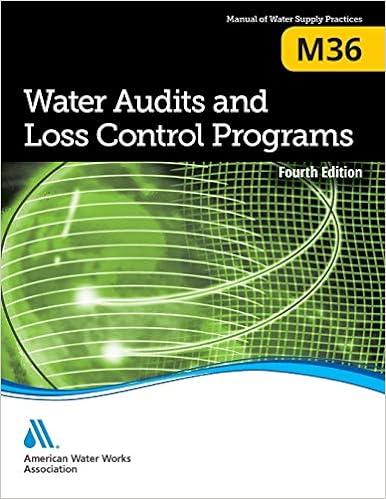Question
10. Required information Exercise 8-37, 8-38, 8-39, 8-40 (Algo) (LO 8-2, 3, 5) [The following information applies to the questions displayed below.] Pacific Ink had
10. Required information
Exercise 8-37, 8-38, 8-39, 8-40 (Algo) (LO 8-2, 3, 5)
[The following information applies to the questions displayed below.]
Pacific Ink had beginning work-in-process inventory of $802,560 on October 1. Of this amount, $335,200 was the cost of direct materials and $467,360 was the cost of conversion. The 59,000 units in the beginning inventory were 25 percent complete with respect to both direct materials and conversion costs.
During October, 124,000 units were transferred out and 41,000 remained in ending inventory. The units in ending inventory were 75 percent complete with respect to direct materials and 35 percent complete with respect to conversion costs. Costs incurred during the period amounted to $3,094,000 for direct materials and $3,893,400 for conversion.
Exercise 8-39 (Algo) Compute Costs per Equivalent Unit: FIFO Method (LO 8-5)
Required:
a. Compute the equivalent units for the materials and conversion cost calculations.
b. Compute the cost per equivalent unit for direct materials and for conversion costs using the FIFO method.
Complete this question by entering your answers in the tabs below.
- Required A
- Required B
A. Compute the equivalent units for the materials and conversion cost calculations.
|
B. Compute the cost per equivalent unit for direct materials and for conversion costs using the FIFO method. (Round your answers to 2 decimal places.)
|
11. Required information
Exercise 8-37, 8-38, 8-39, 8-40 (Algo) (LO 8-2, 3, 5)
[The following information applies to the questions displayed below.]
Pacific Ink had beginning work-in-process inventory of $802,560 on October 1. Of this amount, $335,200 was the cost of direct materials and $467,360 was the cost of conversion. The 59,000 units in the beginning inventory were 25 percent complete with respect to both direct materials and conversion costs.
During October, 124,000 units were transferred out and 41,000 remained in ending inventory. The units in ending inventory were 75 percent complete with respect to direct materials and 35 percent complete with respect to conversion costs. Costs incurred during the period amounted to $3,094,000 for direct materials and $3,893,400 for conversion.
Exercise 8-40 (Algo) Assign Costs to Goods Transferred Out and Ending Inventory: FIFO Method (LO 8-2, 5)
a-1. Compute the cost of goods transferred out and the cost of ending inventory using the FIFO method.
a-2. Is the ending inventory higher or lower under the weighted-average method compared to FIFO?
Complete this question by entering your answers in the tabs below.
- Req A1
- Req A2
A1. Compute the cost of goods transferred out and the cost of ending inventory using the FIFO method. (Do not round intermediate calculations.)
|
12. Exercise 8-46 (Algo) Operation Costing: Ethical Issues (LO 8-8)
Brokia Electronics manufactures three cell phone models, which differ only in the components included: Basic, Photo, and UrLife. Production takes place in two departments, Assembly and Special Packaging. The Basic and Photo models are complete after Assembly. The UrLife model goes from Assembly to Special Packaging and is completed there. Data for July are shown in the following table. Conversion costs are allocated based on the number of units produced. There are no work-in-process inventories.
| Total | Basic (20,000 units) | Photo (20,000 units) | UrLife (10,000 units) | |||||||||
| Materials | $ | 2,430,000 | $ | 499,000 | $ | 1,219,000 | $ | 712,000 | ||||
| Conversion costs: | ||||||||||||
| Assembly | $ | 2,259,900 | ||||||||||
| Special Packaging | 619,000 | |||||||||||
| Total conversion costs | $ | 2,878,900 | ||||||||||
Required:
a. What is the cost per unit transferred to finished goods inventory for each of the three phones in July?
b. The UrLife model is sold only to the government on a cost-plus basis. The marketing vice president suggests that conversion costs in Assembly could be allocated on the basis of material costs so he can offer a lower price for the Basic model.
1. What cost would be reported for the three models if the marketing vice president's suggestion is adopted?
2. Would this be ethical? Assume the conversion costs are not related to material dollars.
Complete this question by entering your answers in the tabs below.
- Req A
- Req B1
- Req B2
A. What is the cost per unit transferred to finished goods inventory for each of the three phones in July? (Do not round intermediate calculations. Round your answers to 2 decimal places.)
|
B1. The UrLife model is sold only to the government on a cost-plus basis. The marketing vice president suggests that conversion costs in Assembly could be allocated on the basis of material costs so he can offer a lower price for the Basic model.
What cost would be reported for the three models if the marketing vice president's suggestion is adopted? (Do not round intermediate calculations. Round your answers to 2 decimal places.)
|
Step by Step Solution
There are 3 Steps involved in it
Step: 1

Get Instant Access to Expert-Tailored Solutions
See step-by-step solutions with expert insights and AI powered tools for academic success
Step: 2

Step: 3

Ace Your Homework with AI
Get the answers you need in no time with our AI-driven, step-by-step assistance
Get Started


